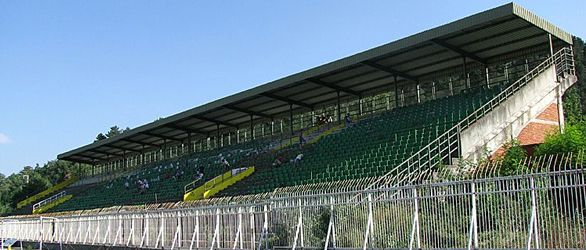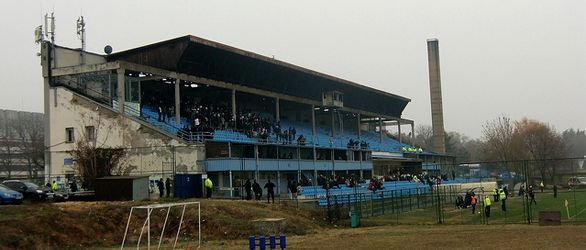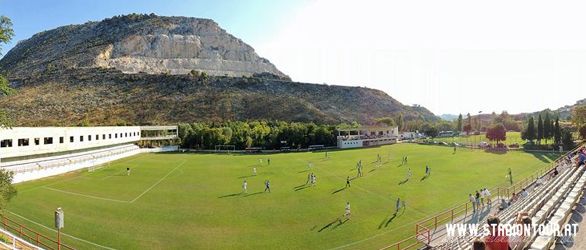New stadiums: Three Balkan hills
source: StadiumDB.com; author: michał
 Each with its own charm and a story to tell. One had a concentration camp, another has its “Stadium of Death” and the last has people who decided to build a venue for their home side to have a place to stay…
Each with its own charm and a story to tell. One had a concentration camp, another has its “Stadium of Death” and the last has people who decided to build a venue for their home side to have a place to stay…
Advertisement
 Stadion pod Tumbe Kafe
Stadion pod Tumbe Kafe

Located just at the basis of Baba mountain in 80,000-people town of Bitola, the ground became infamous in 1992 due to riots that broke out before Pelister-Vardar game that never took place as a result. Parts of the south stand were destroyed by fire and fences torn down. Some people began calling it “Stadium of Death” since then, despite there being no information of casualties.
Everyday use isn’t that dramatic, thankfully. Two stands of the ground that together hold 6,100 spectators are usually occupied in only a small part, with not even 1,000 people in attendance. South side, traditionally reserved for local fanatics Čkembari is sometimes closed due to no seats and low demand.
 Stadion Kralj Petar Prvi
Stadion Kralj Petar Prvi

Used by residents long before Banjica became a suburban district of Belgrade, the playing field was located near the hill also named Banjica (or simply – Washroom in English). This beautiful picturesque location was marred by horrifying history during WWII, when Nazis established a concentration camp in the neighbourhood.
But sports didn’t stop evolving here. FK Rad was established in 1958 and took over the field, improving it in terms of quality. However, it only became a real football stadium in 1977, thanks to a grandstand being built. Initial capacity was 3,500 people, later increased to current 6,000. There were plans to expand it to some 20,000 with extensive commercial infrastructure, but they didn’t come to fruition so far.
The stadium is named after Peter I, the last king of Serbs.
 Stadion u Pricviću
Stadion u Pricviću

In this uniquely beautiful scenery home side NK Mosor used to play until 1972, when they moved for infrastructural reasons to nearby town of Stobrec. However, an amazing initiative of club and municipality authorities, local businessmen and regular villagers the venue has been redeveloped completely for Mosor to play home again.
It now has three modest stands that in total hold some 3,000 people, more than there are inhabitants in Žrnovnica. Above one of them office space has been created , but it remains unfinished to date.
Advertisement

 StadiumDB
StadiumDB